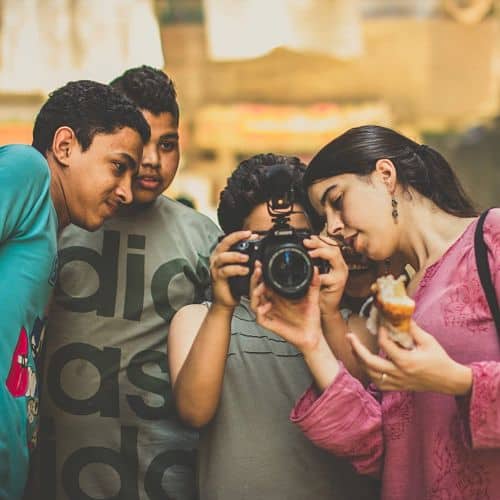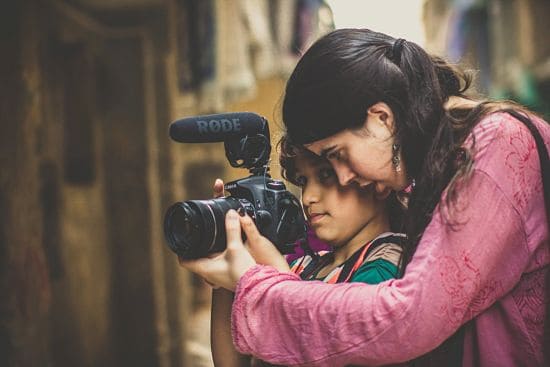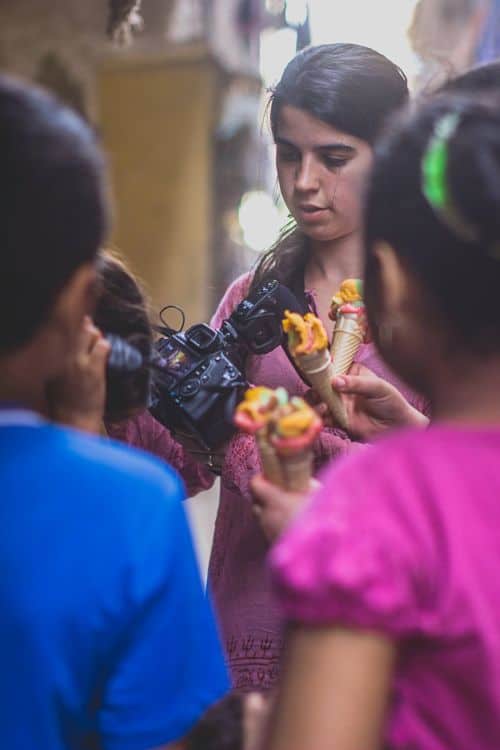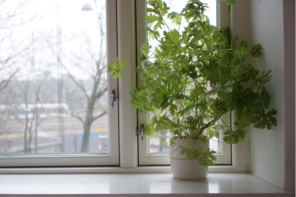In Egypt, children are subject to a conservative and hierarchical public educational system. Underfunding, overcrowded classrooms and precarious infrastructure make the Egyptian school a place full of bored kids unmotivated to find a future through their studies, and a lot of old teachers who have had the same salary for decades and have a lack of interest to modify the ‘status quo’ in the classroom. The revolutionary efforts to reshape Egypt and especially the educational system have so far been in vain. The first post-revolution elected dictatorial regime of president Morsi and the following, current elected dictatorial regime of president Sisi have not made any significant changes in education.
Children in Egypt have experienced and participated in a revolution that was streamed to the world as an example of citizenship, making Egyptians proud again of being Egyptian.
Children thus were present in the streets and broadcast through the internet to audiences around the globe, becoming part of a collective struggle to rebuild their own social world. Yet, they’ve been forced to forget it and return to the same overcrowded classrooms and the same old boring lessons.
City Play was recorded in 2014, during the electoral campaign that officially made Sisi the head of state, when Cairo swapped the demonstrations in Tahrir Square for political arguments in every street café. The filmmaker/researcher Paloma Yañez Serrano worked with children (aged 6 to 15) to make a film about play, city and citizenship from their own perspectives, showing their experiences playing and exploring the meanings of play through the lens of her camera.
The first group of children was filmed in their environments of daily life; the others were participants of an educational project called Mini Medina (Mini City in Arabic), where the adult facilitators helped groups of sixty kids to recreate the buildings and the system of their own mini city. The children were first asked to make their ideal constitution and later given recycled materials to build and take roles in the city, experimenting and playing with professions but also with the urban dynamics. The camera was also introduced to the game by children playing to be reporters.
Visual methods used to engage with the participating children
Constantly, we produce or interact with photos, video, text, audio, shorts, clips or gifs, just like many of our informants. We take digital and physical notes of our lives, share them and interact through those notes with other people. As people who study the diversity of our human cultures, we need to accompany this transition and integrate its tools into our own work practices. This doesn’t mean that fieldnotes should be forgotten, but to recognize that they have a role and can work in parallel to video and photo taking, audio recording or sketching. Actions of our everyday life that can be used in the benefit of the research while on the field, allowing an open door for an eventual transmedia presentation of our anthropological endeavours. This means that as anthropologists who have been taught about the intricacies of field notes, we need to receive equal training on visual and sensory methods (Sanjek, 1990). These methods are not only fundamental to understand our ways of learning, knowing and representing the lives of others, but most importantly to understand our past, how we engage with our present and how we imagine our future. (Pink, 2009: 3). Specifically in the study of children, visual anthropological research has produced distinct understandings of the expression of children at play.
MacDougall, when using visual ethnography to reveal the children’s world and imagination from their own perspective, suggested that, as the image is a reflexive object of the moment being lived by the filmmaker, if the image is to be reflective of children, the children should be active participants of image production (MacDougall 2006:3).
Visual collaboration with children is useful to create artistic bonds, interest and trust with the children. However, there is no easy way to collaboration as it leaves the outcome suspended, meaning the outcome is subject to the nature of the interaction between the filmmaker and the people in front and around the camera. While the hectic space of Mini-Medina only allows for snippets of children interventions as they move around the city, in the closed space of the other participants’ house, collaboration allows for long and thorough interviews.
The main idea here is that collaboration is bound by a specific space and the activities taking place in that space.
If the activity is dominant, as in the case of Mini-Medina, collaboration is bound to take place within the rules, language and symbols of the children’s city. Whereas if the dominant activity is an everyday life setting (i.e. home, a local street), collaboration can be projected towards future, envisioned or imaginative life worlds of children, exploring what they want to be, where they want to go and the meanings ascribed to things.
In this process, the presence of the camera as a technological object acts as a bridge between the world of the researcher and children. The researcher and children worked with a DSLR Camera Cannon 70D. Very few of these kids had seen a professional camera up close, let alone playing with and operating it. Often with children, there is a tendency to fear their carelessness and rapid movements when they are given sensitive objects like a camera. However, the reality is that
giving a camera to a child is an act of trust in the part of the researcher and an act of responsibility in the part of the child.
Trusting the child first with the equipment and later with the technical operation allows a unique bond to emerge between the child and the filmmaker, but also between the child and the camera. On the one hand, the child becomes excited to participate and engage in the research project, being creative about their ideas and willing to share their personal stories, while being directed and framed on camera. On the other hand, the children learn to see the world through the camera, creating scenes and narratives and showing what is important for them as they are given the opportunity to represent themselves.
From fieldwork to the screen: City Play
The double use of film as a means to inspire creativity and imagination among children, as well as to represent them from their own perspective can be seen in some of the scenes.
A clear example is the final scene of the film, when a conflict appears between the citizens of Mini Medina, after some kids steal from others. The footage was recorded by the researcher and by the kids playing to be reporters. While Paloma was recording the discussion from distance and asking questions to children individually, the kids that were recording were trying to have the closest shot of who was shouting and screaming. The montage shows Paloma’s footage first, representing the problem as an outsider, filming the kids that have been robbed complaining to the camera about the lack of interest and help of Mini Medina’s police. Later, the scene collapses into a big scuffle inside the play city space, when some policeman catches a thief and the other kids try to have their money back. We see a lot of children crossing in front of the camera as it moves, trying to reach the epicentre of the brawl. The light changes, parameters go out of control, the image shakes and focus is hardy found; this part was filmed by the children. The symbiosis between the camera and the filmmaker not only applies to how the scene is recorded but also to what is recorded by the camera. When Paloma is filming, the kids are less excited when they speak to her, they respect the adult task of recording and they try to make some room for the camera if they realize that they are in the middle of the shot. However, when children are recording, the others will interact with the filmmaker child as an equal, revealing their attitude and disposition to play with the camera as well, shouting and making funny faces directly to the camera in a way that they wouldn’t do with the adult researcher.
This mixture of performativity and world discovery brings certain magic to the picture and the investigation.
The more the children engage with the camera, the more creative they become. The magic is based on the movement of ideas, which evolve from day to day. This was particularly impressive with some children from the ‘daily life group’. Some of the elder children (15 years old), when filming with their friends, were very keen on the idea of making a visual research about play together. The first day, when they engaged with the camera to talk about their ‘own’ play, this was enacted as a funny but superficial sketch of a boy asking a girl for her number with an extra tone of Egyptian humour. The second day, they did a sketch about exams cheating, showing the play that goes on among the students, but also talking about the teacher’s behaviour and corruption in school, making a clear point that the whole education system is a game itself. Finally, the third day, they started considering politics as play. They talked about the Revolution and how Morsi and Sisi had messed it up. During those days, Sisi had released a manipulative music video calling the population to vote for him. The young teenagers thought the video was a mockery of democracy and decided to make a videoclip mocking it. In three days they had expanded their definition of play from girls and boys flirting, to the whole political system.
For a researcher, this rapid process is hard to follow and many times there is no time to question these narrative orientations and film choices in depth. They are partial fragments of a building-up-truth that the children are working out through improvisation. However, such truth is not based on imitations and mimicking of the adult world, rather on an ‘inherent motive to use their intellect, creative thinking and imagination in attempting to explain the world to themselves and exercise influence upon it’ (Ariel, 2002:91). Although children can develop different fantasy worlds from a single object, the first contact that children have with the object relates to their cultural background.
In a gamble of real-life possibilities, the child experiments and chooses which possibilities should integrate and determine real civic life.
Ariel proposes, ‘Children find the raw materials out of which they create their make-believe play in the physical and cultural environment in which they grow up’. In this context, images, narratives and play develop as the different players attempt to integrate their views on how reality should be.
City Play (2015)
32 minutes
Director: Paloma Yáñez Serrano
References
Ariel, Shlomo. (2002). Make-Believe play in a cross-cultural perspective; a visit to wonderland. Praeger Publishers, Westport.
MacDougall, David. (2006). The Corporeal Image: Film, Ethnography, and the Senses. Princeton University Press.
Sanjek, Roger (1991). eFieldnotes. The Makings of Anthropology in the Digital World. University of Pennsylvania Press
Pink, Sarah (2009). Doing Sensory Ethnography. SAGE.















